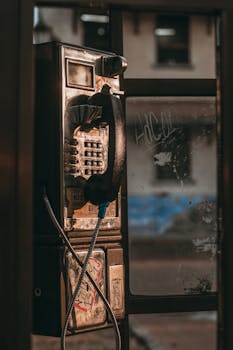Remember when phones were more than just tools? The Siemens Xelibri series dared to ask, "What if phones were fashion?" Let's dive into the quirky world of these iconic, yet ultimately unsuccessful, devices.

Siemens Xelibri: Phones That Dared to Be Different
Remember the early 2000s? Flip phones were king, ringtones were polyphonic masterpieces, and phone design was, well, often a bit… boring. But Siemens had a different idea. They decided to shake things up with the Xelibri series, a line of phones that prioritized fashion over function, creating devices that were more like accessories than communication tools.
A Bold Vision: Fashion-Forward Phones
The Xelibri series wasn't about having the best camera, the fastest processor, or the most storage. It was about making a statement. Siemens aimed to create phones that reflected personal style, offering a range of designs that were unlike anything else on the market. They treated phones as fashion accessories, releasing new collections each season, much like clothing designers.
# Xelibri 1: The Futuristic Pendant
The Xelibri 1, released in 2003, was arguably the most iconic of the bunch. It was designed to be worn as a pendant, hanging from a necklace or belt. Its circular shape and minimalist design were certainly eye-catching. Functionality was basic, focusing on calls and texts, but the real draw was its unique aesthetic. Think of it as a futuristic communicator straight out of a science fiction movie.
# Xelibri 2: The Compact Mirror
The Xelibri 2 took a different approach, resembling a compact mirror. Its small size and clamshell design made it easy to slip into a purse or pocket. Again, features were limited, but its stylish design made it a popular choice for fashion-conscious consumers. Imagine pulling out a sleek, mirrored device to make a call – it definitely turned heads!
# Other Xelibri Designs: A Diverse Collection
The Xelibri series included other intriguing designs, such as the Xelibri 3 with its sliding mechanism, the Xelibri 4 with its geometric shape, the Xelibri 5 with its jewelry-inspired look, the Xelibri 6 with its organic form, the Xelibri 7 with its asymmetrical design, and the Xelibri 8 with its unique, almost alien appearance. Each model had its own distinct personality, catering to different tastes and styles.
Why the Xelibri Series Ultimately Failed
Despite its bold vision and innovative designs, the Xelibri series ultimately failed to capture a significant market share. Several factors contributed to its demise:
- Limited Functionality: In an era where phones were rapidly evolving with new features like cameras and multimedia capabilities, the Xelibri phones remained basic. Consumers were increasingly demanding more than just calls and texts.
- High Price Point: The Xelibri phones were priced higher than comparable phones with more features. This made them a difficult sell for consumers who were looking for value for their money.
- Niche Appeal: The Xelibri phones were specifically targeted at fashion-conscious consumers. While this created a strong brand identity, it also limited their potential market. The average consumer wasn't willing to sacrifice functionality for style.
- Marketing Challenges: While the marketing was strong, it was difficult to convince people to buy a phone based solely on its looks, especially when other phones offered so much more.
Lessons Learned: The Xelibri's Legacy
Despite its commercial failure, the Xelibri series left a lasting legacy. It demonstrated that phones could be more than just functional devices; they could be fashion statements. It paved the way for other phone manufacturers to experiment with bold designs and cater to specific niches. While the Xelibri phones may not have been a commercial success, they were undoubtedly a creative triumph.
The Xelibri series reminds us that innovation sometimes requires taking risks, even if those risks don't always pay off. They were a bold experiment that, while ultimately unsuccessful, helped to shape the future of mobile phone design. So, the next time you see a phone with a unique design, remember the Siemens Xelibri – the phones that dared to be different.
Today's Fashion Phone Landscape
While the Xelibri's specific design language didn't survive, its core concept did. Today, we see collaborations between tech companies and fashion brands, special edition phones with unique finishes, and a general trend towards making phones more aesthetically pleasing. The Xelibri might not have won the battle, but it certainly influenced the war.
Conclusion
The Siemens Xelibri series was a fascinating experiment in mobile phone design. It dared to challenge the status quo and create phones that were more like fashion accessories than communication tools. While it ultimately failed to achieve mainstream success, its legacy lives on in the increasingly stylish and diverse world of mobile phones. It's a reminder that sometimes, the most interesting ideas are the ones that push boundaries, even if they don't always succeed.
